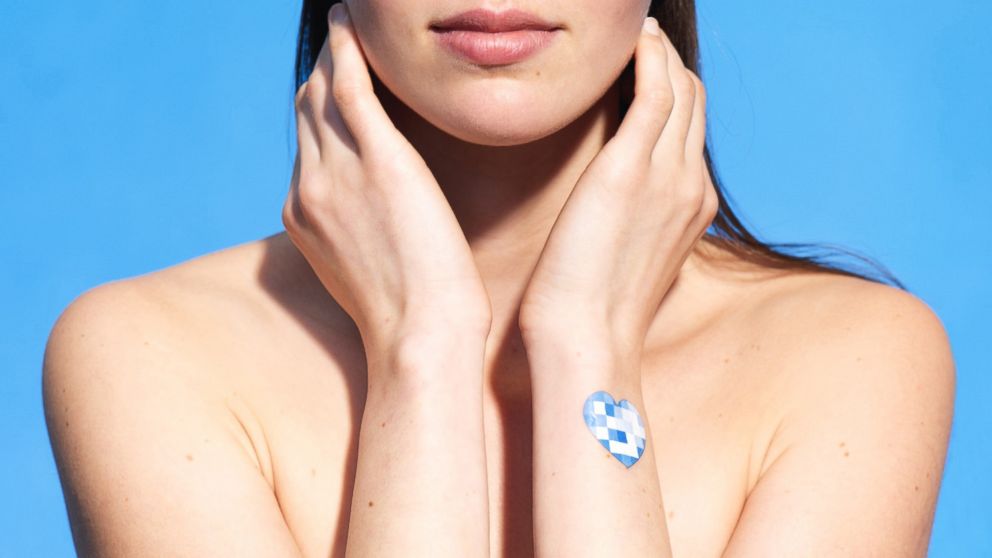New UV Wearable Sticker Claims to Help Measure Sun Exposure
Here's how the sticker could help prevent sun damage.

— -- In the fight against sun damage, a new way to protect yourself may be in the form of a tiny heart-shaped monitor developed by the L'Oreal Paris cosmetic company.
The sticker-like monitor, dubbed "My UV Patch," was designed by the company and introduced this week at the Consumer Electronics Show (CES) on Wednesday. The device is extremely thin -- only 50 micrometers -- which is half the thickness of a strand of hair, according to L'Oreal.
The device is said to work by using photosensitive dyes that change colors when exposed to UV rays to indicate levels of sun exposure. To figure out one's UV exposure, the wearer can take a picture of the tiny blue heart and upload it to a mobile app.
“Previous technologies could only tell users the amount of potential sun exposure they were receiving per hour while wearing a rigid, non-stretchable device," Guive Balooch, global vice president of L’Oreal’s Technology Incubator, said in a statement Wednesday. "The key was to design a sensor that was thin, comfortable and virtually weightless so people would actually want to wear it."
Dr. Barney Kenet, a Manhattan-based dermatologist, said it's exciting to see how the technology could help people.
"I think it’s great," Kenet told ABC News. "This falls in the category of photo protection and it's another tool to help the general public enjoy the sun safely."
He said it is important that people wear the patch on a part of their skin that is most exposed to the sun, such as the face, lower neck and back of the hands.
"The catch...is it’s [got] to work for mechanical reasons and practical reasons for where you’re going to wear it," he explained.
Kenet did note that many people may not want to wear a blue heart sticker on their face for cosmetic reasons. He said he hoped that the technology may one day be used to develop another, more cosmetically pleasing device, such as a clear patch.
Kenet said even if these wearable devices become popular, people can't avoid basic rules of sun protection: wearing sunblock every day and avoiding direct sunlight during the most sunny parts of the day (10 a.m. to 2 p.m.).
"My message is don’t completely hide from the sun but like anything, get exposure in moderation," Kenet said.
He pointed out that going out in the sun for just a few minutes a week with the face, neck and hands exposed will be enough sunlight for normal vitamin D production.




